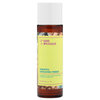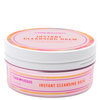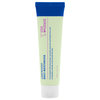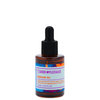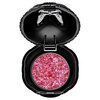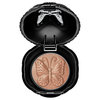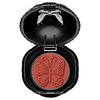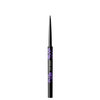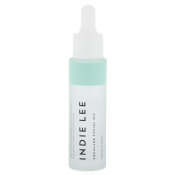
Just like you, your skin doesn’t fit into one box. It’s better to think of skin like leaves or moods—it can fluctuate depending on the season or hormones or any number of other factors. Genetics play a role too, and certain conditions like eczema and rosacea can be passed down (feel free to blame your parents for your next pimple). But our lifestyle, and how we take care of our skin, also factors hugely into how your complexion looks. Using too much of the wrong, or even right, products can wreak havoc on your complexion over time. For example, too much of an anti-aging ingredient like high-grade retinoid on normal skin can turn usually flawless areas into highly sensitive patches. And before you know it, you went from having normal to combination skin!
With so many products aimed at multiple skin care concerns, trying to figure out what works best isn’t always easy. And to make the best decisions for your regime, you first need to get to know your skin type. To help guide us through the five most common skin types (sensitive, dry, normal, oily, combination), we tapped Dr. Elizabeth Hale, a dermatologist and clinical associate professor of dermatology at NYU School of Medicine.
The best way to determine your type? According to Hale, you have to simply pay attention to your skin. “There’s not really a litmus test,” she explains. If you’re constantly blotting, chances are you’re oily. If you can’t tolerate many products, you’re more sensitive. Use our guide below to figure out where you fall on the spectrum. Remember, you may have a foot in one and a toe in another—it’s common!
For All Skin Types
“My across-the-board advice is: sunscreen,” says Hale of the one must-have for everyone, regardless of skin type. Everyone from the super oily to super dry can find a formulation that works, and a good SPF is the number one thing that will protect against signs of aging. “Your skin will thank you as you get older,” says Hale.
Sensitive
Sensitive skin is most likely dry, itchy, and flaky. It also burns quickly (in sun or wind), flushes often, and is irritated by changes in weather, chemicals, or even just products in general. Those with fairer skin (and little melanin, a naturally occurring pigment that enables tanning) are more likely to be sensitive. “The classic example would be those of Celtic descent,” says Hale, adding that visible broken capillaries are another telltale sign.
The Routine
Cleansing: Hale suggests avoiding overly abrasive products like scrubs and sonic cleansing brushes; they can further frustrate already agitated skin. Opt instead for fragrance-free, hypoallergenic, and non-soapy cleansers. (Hale recommends Cetaphil or Aveeno cleansing wipes for non-irritating cleansing and makeup removal.) To treat breakouts, skip products containing alpha-hydoxy acids and/or glycolic acid, and spot test the area with a beta-hydroxy acid or salicylic acid treatment—the latter two are less irritating and better tolerated by sensitive skin than the former. We suggest using Bliss No ‘Zit’ Sherlock Spot Treatment. Use anti-aging products sparingly, as they can irritate skin.
Moisturizing: Moisturizing is very important for sensitive skin. “In general, the thicker the moisturizer, the better,” says Hale, adding that sunscreen is paramount in the morning, as is a rich, creamy moisturizer at night to rehydrate the complexion.
Extra tips: Avoid drying ingredients like sulfates (most notably sodium lauryl sulfate), alcohol-based products and fragrant-sounding ingredients that could cause further irritation. Also check on the section on dry skin below; “There are many overlaps between the two,” says Hale.
Combination
Combination skin is the most common skin type, says Hale. And it looks different from person to person: you might have an oily T-zone (nose, forehead, and/or chin) but dry skin everywhere else, or you might be dry and sensitive only in certain concentrated spots—say, around the eyes or mouth. Some areas of combination skin tolerate products better, while other zones might appear irritated, overly oily, or dry after using cleansers, moisturizers, or masks.
The Routine
Cleansing: The idea here is to “maximize the benefits of products you’re using without compromising the rest of your skin,” says Hale. Keep in mind that you don’t have to lather a product on the entire face; and it may be best to use a cleansing brush only where you really need it, like a patch of blackheads. If you find oily spots (say, the nose and forehead), try targeting them with an acne-fighting cleanser and then perhaps use a gentler, non-soap product—or no product at all—on drier areas (usually around the mouth and eyes). Avoid using retinoids on drier areas, too.
Moisturizing: Same philosophy applies: know what works for you and what it does, and spot-treat. “Say you have combination or oily skin, and notice you’re getting crow’s feet. You wouldn’t slather moisturizer all over your face, but you could use a thick cream under the eyes since it’s not an acne-prone area,” explains Hale.
Extra tips: With combination skin, it’s especially important to be aware of fluctuations in your environment and body, and adjust accordingly. Hormonal or seasonal changes might cause your skin to act differently during certain times of the year (or month, for women), and it can change throughout your lifetime.
Oily
An oily complexion is characterized by shine and excess oil (especially on the forehead and nose), blackheads, and clogged or large, visible pores. If you’re constantly blotting your face and had more breakouts than your peers as a teen, chances are, you have oily skin.
The Routine
Cleansing: Oily skin will benefit from deep cleansing with a sonic brush. “My favorite ingredient for oily skin is salicylic acid,” says Hale. “It’s a larger molecule than alpha-hydroxy acid, which means it gets deep into the pores—great for blackheads!”
Moisturizing: Remember that oily doesn’t mean “skip the moisturizer.” But look for one that’s lightweight, water-based, and noncomedogenic (a fancy term for “won’t clog pores or breakouts!”). Surprisingly, Hale recommends Olay Complete All Day Moisture Lotion SPF 15 that’s actually oil-free and lightweight. Another option is a water-based, no-shine product like Ole Henriksen Sheer Transformation Cream, topped off with sunscreen (if you’re concerned about shine try an alcohol-based spray for face and body).
Extra tips: There’s a silver lining for oily types. “Oily skin ages better,” says Hale. “I always hear people with oily skin say they chronically have less wrinkles.” Another perk? Oily skin can also better tolerate anti-aging ingredients like retinoids, which work to exfoliate, clear, and diminish clogged pores. One thing to note: if you use blotting papers or linens to remove excess oil, you’re removing SPF, too, so be more diligent about reapplying throughout the day.
Normal
“These people are lucky!” says Hale. But know that while normal skin stays fairly consistent without a lot of breakouts, it isn’t immune to dry patches and blemishes. If you can tolerate ingredients and products other skin types could not without irritation, you might be “normal.” Usually normal types are not too fair-skinned, as they have more protective melanin.
The Routine
Cleansing: You have the luxury of being able to try different cleansers to see what works without risking a ton of irritation. Whatever you use, cleanse twice a day, morning and night.
Moisturizing: Hale recommends following with a moisturizer twice a day, also morning and night. Experiment with what you prefer—water- or oil-based products—both of which are suitable for normal skin. For super soft, hydrated skin, we can’t get enough of Indie Lee’s Squalane Facial Oil.
Extra tips: “Don’t overdo it!” warns Hale, “even though skin can put up with trying different things.” Watch out for dryness, especially when using anti-aging ingredients; to prevent irritation, layer a moisturizer over the top.
Dry
Cracked skin, rough patches, itching, sensitivity to metals and certain ingredients most people don’t have significant negative reactions to—these are all signs that you have dry skin. Other indicators: your face isn’t oily, the skin on your arms and legs is severely dry, and/or you suffered from eczema as a child.
The Routine
Cleansing: Like sensitive skin, avoid harsh abrasives, scrubs, and cleansing brushes. Hale recommends opting for non-soapy cleansers like Cetaphil.
Moisturizing: “People with dry skin really need to moisturize!” says Hale. She recommends thick, heavy moisturizers with ceramide. “It’s one of the basic building blocks of our skin—it’s what keeps our skin cells together, and it will help restore the skin’s hydrated barrier,” she says. Her pick: CeraVe’s Facial Moisturizing Lotion (sold for AM with SPF 30 and PM with time-release ceramides that work to restore healthy skin during slumber.)
Extra Tips: Dry skin is compromised in that it doesn’t have a healthy barrier. That means “it’s crucial to lather on lotions and creams to restore balance and keep the good things in and bad environmental irritants out,” says Hale. Overdoing it with any product may further agitate already sensitive skin.
Photo: Blend Images/Ariel Skelley
Featured Products
You Might Also Like
-

Makeup
Deadly Lipstick and Other Fatal Beauty Practices Throughout the Ages
- 630
-
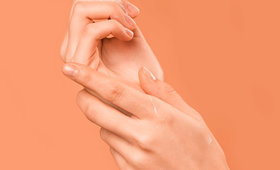
Hand Treatments
7 Hydrating Creams for Extremely Dry Hands
- 55
-
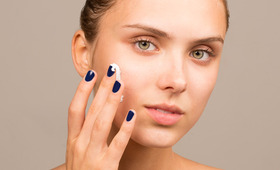
Skincare
4 Important Things to Know About Exfoliating
- 644
-
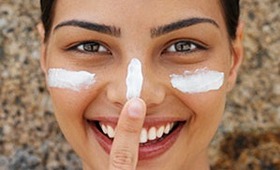
Sun Protection
Natural Looking Sunscreen
- 29
-
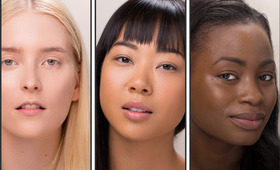
Skincare
Flaky, Itchy, Dry Skin? Here’s How to Choose and Use Foundation
- 584
-
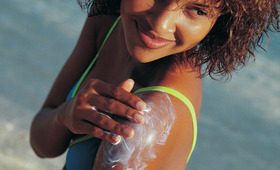
Sun Protection
The Right Way to Apply Sunscreen
- 152
-

Skincare
In Praise of Witch Hazel
- 1142
-

Face Serum
Remove Those Dark Spots
- 192



